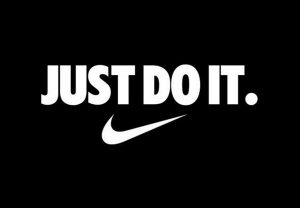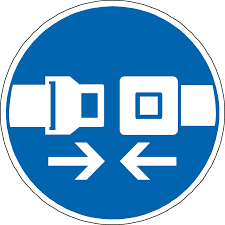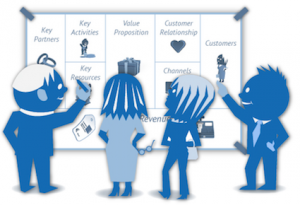Planning is Cheap – Execution is Expensive
 Podcast version by the end of the post or click here: Podcast
Podcast version by the end of the post or click here: Podcast
Just do it!
That is the catchy payoff used by Nike.
For most people venturing into sports that may not be the best advice to follow. Yes, you should indeed start today, but do it according to a plan, or you may end up with severe injuries that will only delay the whole effort and postpone the results you wanted in the first place.
In business, we also often find the “Just do it!” mentality. As no plan of activities will survive the meeting with reality then why bother planning. Let’s just do something and see what happens. We can adjust the course as we learn what works.
Don’t just do it!
 When I click the seatbelt on my morning flight to see a client, then I am convinced that the airline does not have the “Just do it!” mentality. I am sure they have plans and contingency plans for what should and could happen until I am safely on the ground again. I am confident that they have the “Think!” mentality introduced by IBM in 1911 (a couple of times IBM became convinced that they could predict or control the world and paid dearly for such hubris).
When I click the seatbelt on my morning flight to see a client, then I am convinced that the airline does not have the “Just do it!” mentality. I am sure they have plans and contingency plans for what should and could happen until I am safely on the ground again. I am confident that they have the “Think!” mentality introduced by IBM in 1911 (a couple of times IBM became convinced that they could predict or control the world and paid dearly for such hubris).
Planning is cheap
The fact is that planning is much cheaper than execution. You can change a plan from one moment to the next. You can refine and adjust the plan with relatively little effort in a couple of days, weeks or months. You can define milestones, budgets and KPI’s that you will expect the execution of the plan to meet and produce. You can communicate the plan and involve people in the planning process ensuring alignment behind and their support for executing the plan. As long as you are in planning mode, everything is possible.
The only thing a plan cannot do is predict or create the future, but if you are creative and committed one of your many plans may become successful and may even make a dent in the universe.
Plans come in various sizes
 Let’s say that your ambition is to become the global market leader in your particular business. Today you have 5% of your domestic market, and in 10 years you want to have 20% of the global market. Doing the math, you must over the next ten years enter the 15 strongest markets in the world (of which the US must be one), and you must grow your company from the current 100 people to probably 10.000 people with operations in at least the 15 key markets.
Let’s say that your ambition is to become the global market leader in your particular business. Today you have 5% of your domestic market, and in 10 years you want to have 20% of the global market. Doing the math, you must over the next ten years enter the 15 strongest markets in the world (of which the US must be one), and you must grow your company from the current 100 people to probably 10.000 people with operations in at least the 15 key markets.
You are convinced that if you don’t achieve this position, then someone else will and that someone else will then have the muscles to make your life miserable even in your domestic market. You also believe that your value proposition (based on the IP or unique capabilities that you have) has the potential to achieve global market leadership, so why shouldn’t you go for it.
There is no way you can develop a plan that can lead you to such an ambitious objective. You will have to break down the goal in smaller steps and then plan each step ensuring that you are heading in the right direction.
You will most likely do a 3-year plan with a budget and activity plan for the first year, then do a review on a monthly basis during the first one or two years, and then every quarter when you have gained momentum with a modus operandi that scales well.
Execution is expensive
 Now it is time to execute the plan, which means opening the CAPEX and OPEX budgets that you assigned and implement the activities that you assumed would deliver the revenue and gross margin at the top of your budget sheet and the profit at the bottom of the sheet. Money starts pouring out of your pockets, but the revenue doesn’t trickle in as fast as your plan assumed. You are behind the budget, and the plan seems to fail. It happens for the vast majority of companies, and now you need to decide what to do.
Now it is time to execute the plan, which means opening the CAPEX and OPEX budgets that you assigned and implement the activities that you assumed would deliver the revenue and gross margin at the top of your budget sheet and the profit at the bottom of the sheet. Money starts pouring out of your pockets, but the revenue doesn’t trickle in as fast as your plan assumed. You are behind the budget, and the plan seems to fail. It happens for the vast majority of companies, and now you need to decide what to do.
Were you overly optimistic on the revenue side? Do you just have to wait and then the revenue will pick up? Are you investing too little? If you invest more will the revenue then come faster? Did you underestimate the competitors? Did you misjudge the market’s need for your value proposition? Were the customers’ switching costs higher than assumed? Did you fail to reduce the perceived risk of doing business with you? Did you assign the wrong people to do the implementation?
This exercise is called “making corrective actions” and is a standard procedure with any business plan. You will revisit all the assumptions in your plan and check which of them needs updating. You will also consider if there were assumptions that you overlooked.
You’ll keep doing this until your plan works and will meet your objectives or you abandon the mission and reconsider your strategy. There is no guarantee that a plan will eventually work. My claim is that planning gives you three major advantages:
- You will increase the probability of success substantially.
- If you are way off target, then you can cancel the mission earlier and with less sunk cost.
- Even when you fail, you will have learned something that will improve the quality of your next plan.
Which format should you use?
 A business plan for a project that is of vital importance to your company should always start with the business model canvas including the value proposition and the business model environment. Getting aligned on the big picture and the vocabulary is a huge step towards success and will help you tremendously when you dive into the details and face the brutal meeting with the real world.
A business plan for a project that is of vital importance to your company should always start with the business model canvas including the value proposition and the business model environment. Getting aligned on the big picture and the vocabulary is a huge step towards success and will help you tremendously when you dive into the details and face the brutal meeting with the real world.
The business model framework is easy to understand and well documented. There are workshops available teaching how to use it, and there are plenty of consultants available to facilitate your planning and implementation processes. If you use the Strategyzer app, then the exercise will make the business plan as a byproduct, but you can also choose to write down the current state of your business model in everyday prose and use that as the latest version of your business plan.
I recommend buying the business model starter kit and put that big poster on the wall of your “war room.” Follow the guidelines and use a separate poster for each new product/service/market segment.
Executing without a plan
 If you had no plan before starting the venture, then my guess is that you’ll be inclined to jump to a quick conclusion and make some changes (when the results don’t match your expectations). After using this approach for some time, your venture will be in a miserable shape, and you’ll abandon the mission.
If you had no plan before starting the venture, then my guess is that you’ll be inclined to jump to a quick conclusion and make some changes (when the results don’t match your expectations). After using this approach for some time, your venture will be in a miserable shape, and you’ll abandon the mission.
But not always! Even blind chickens will find corn, and we can all make a lucky punch now and again, but what did we learn?
I must admit that I am a planning freak and for good reasons. When I was a 3rd year university student, I was asked to make a presentation of some housekeeping stuff for the 1st year students. I thought about what to say well in advance, but as I entered the stage and faced the 250+ people in the auditorium somehow my memory of what I should say evaporated. I made a terrible and embarrassing performance. People were very friendly to me afterward, but I knew that I had failed and I promised myself that it should never happen again. I went to the library and borrowed a couple of books on public speaking, and I talked to some of my teachers (that were present in the auditorium that day). I learned how to prepare a public presentation. I learned to write it down. I learned to rehearse with someone. I learned to rehearse it front of the mirror. I learned to make and use cue cards.
I learned that planning is cheap and execution is expensive.








